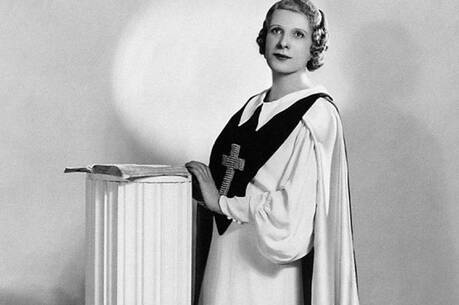A Sensual, Spiritual Feast
For those interested in the role that the visual arts have played in the Christian faith, these two books are major contributions. They are both connected to an important exhibition organized last year by the National Gallery in London entitled Seeing Salvation. According to Neil MacGregor, the National Gallery’s director, roughly one third of the National Gallery’s collection is Christian in content, but relatively few of the museum’s visitors today understand the theological meaning of the works. Rather than arrange an exhibition as a procession of artistic styles and subjects, MacGregor and his colleagues focused on the meaning of the works and how this meaning was designed to strengthen faith. Therefore, the exhibition and both books discuss not only the artworks’ historical background, but also their theological and faith significance, with the focus on the evolving image of Jesus Christ. The title of the exhibition (a paraphrase of Simeon’s declaration, my eyes have seen your salvation [Lk. 2:30]) emphasizes this experiential approach.
The significance of the exhibition and its related publications cannot be overstated. Prior to the National Gallery’s Seeing Salvation exhibition, very few museums of the National Gallery’s stature presented Christian religious art with an emphasis on the religious. MacGregor and company felt that they had an idea that would appeal to large audiences, and their intuition was right. In its 10-week run, Seeing Salvation attracted over 355,000 people and was the number one exhibition for attendance in the United Kingdom for 2000 and the 14th best-attended exhibition in the world for that same year.
Seeing Salvation has generated not only a stunningly beautiful and affordable catalogue by Finaldi and colleagues, but a BBC television series, over three hours in length, and the MacGregor book based on that series, as well as slide packets and study guides. Clearly, the organizers of this exhibition hoped that its impact would extend well beyond the record crowds that saw it. And there is good reason for us to celebrate their efforts, for The Image of Christ and SeeingSalvation may be the finest books to date on the importance of visual expression in the Christian experience.
The principal focus in both The Image of Christ and Seeing Salvation is the artwork and how it reflects, influences, illuminates and informs a developing understanding of Jesus. These two volumes are written by scholars who are equally comfortable with the history of art and with an understanding of the Christian significance of the art they have chosen. Both volumes integrate thoughtful reflections with scriptural citations, but these volumes are not interchangeable. While there are overlaps, each volume covers some art not included in the other. Furthermore, the Finaldi book is scholarly and straightforward; the MacGregor volume, while no less well informed, adopts a more conversational style.
The National Gallery chose to limit the exhibition to 79 artworks, mostly from the Roman Catholic tradition, and to offer thorough commentaries on each work. The Image of Christ is the official catalogue record of that exhibition. Like the exhibition, this catalogue is divided into seven sections that explore concerns such as the symbolic representation of Christ; an evolving visual Christology; a desire to reflect the true likeness of Jesus; two sections on the Passion of Christ; a section discussing the role of the body in Christian art and belief; and a final chapter on the image of Christ in modern times. Each of the sections is introduced by a clearly written overview essay. Then each art object in that section is discussed in page-length essays written by Gabriele Finaldi and her five National Gallery colleagues, with helpful notations as well as a lengthy bibliography. The images are beautifully reproduced, and the commentaries place each work in its religious, historical and cultural context, thereby allowing the reader greater access to the art.
Seeing Salvation, the book based on the BBC series, is a thoughtful, accessible and splendidly illustrated book that can be seen as a worthy, albeit more focused, descendent of Civilization, the immensely influential 1969 television series and book by the late Sir Kenneth Clark. Neil MacGregor is a gifted storyteller who is able to make illuminating connections. Indeed, throughout the book he comfortably interweaves scriptural passages, historical documents and testimonies in a way that deepens our faith-understanding of these works.
Focusing primarily on Christ’s infancy and his passion, death and resurrection, MacGregor shows how images of these subjects evolved. MacGregor begins the volume with a discussion of the Adoration of the Magi theme, tracing it from its earliest known occurrence in the early third-century Roman catacombs to the sixth-century Arian mosaics of San Apollinare Nuovo in Ravenna to the 12th-century reliquary in the Cologne Cathedral to Peru in the 17th-century, when the Jesuit priest and artist Diego de la Puente painted one of the kings as a South American chieftain. The image evolves from the catacomb expression of the community of the faithful to an elaborate association with royalty, to an image of inculturation; but in each example, MacGregor states, these three figures behold and proclaim the utter universality of Christ....
He also traces the development of imagery of Christ from early Christian monograms (such as the Chi Rho) and acronyms such as Icthus (the Greek word for fish, which becomes an acrostic for Jesus Christ, Son of God, Savior) to the introduction of figurative representations of Christ, the earliest being the third-century Good Shepherd. The physical likeness of Christ was not important to the early Christians of the first centuries. As MacGregor states: It is his acts, not his appearance, that allow us to recognize him for what he is.
But likeness did eventually become important, and in an excellent chapter entitled The Quest for the True Likeness, MacGregor examines images claiming to have been made by extraordinary means, from the miraculous images of the seventh-century Acheiropoieton or image not made by human hands, to the the Shroud of Turin. Whether or not they are authentic is beside the point. MacGregor is more interested in the compelling hold that these objects have had on people across the centuries who believe that the images somehow put them in closer contact with Jesus, the Son of God.
He speaks with appreciation of the major contribution made by St. Francis of Assisi to Western art. By commissioning a manger scene, Francis helped humanize Christ, as he refocused the image of him from the mighty King of Kings to the vulnerable and helpless baby, thereby making him more accessible to a broader spectrum of humanity. This shift had a profound effect on the work of artists such as Robert Campin, Georges de la Tour and Rembrandt. MacGregor contrasts these Franciscan-inspired images with the Dominican use of images, such as the frescoes by Fra Angelico in each of the monastic cells in the Convent of San Marco in Florence. Less appealing to a large popular audience, these images were designed to encourage a more intellectual and privatized contemplation.
It is curious that except for the brief discussion of Diego de la Puente in Peru, there is no exploration of the important role that images have played in Jesuit spirituality, as the Jesuits commissioned major artists and architects to help them in their own evangelizing work. This is a missed opportunity in an otherwise splendid book.
In a brief but eloquent chapter, MacGregor focuses on two great artists, Rembrandt and Michelangelo, and shows how their approach to the theme of Christ’s passion and death changed as they grew older, as they themselves went through their own passions. In both of these discussions, Scripture is generously incorporated.
Both The Image of Christ and Seeing Salvation should be part of any theological or art historical library. For those who are looking for resources to use in parish adult education or college-level Christian theology and art courses, these books are indispensable. The MacGregor book, especially, could be incorporated effectively into retreats, ongoing spiritual direction or personal faith renewal. Both volumes make the visual iconography of Christianity accessible to people from a variety of religious backgrounds. Finally, they reveal the Christian catechetical opportunities that exist in many of our museums.
This article also appeared in print, under the headline “A Sensual, Spiritual Feast,” in the April 16, 2001, issue.








